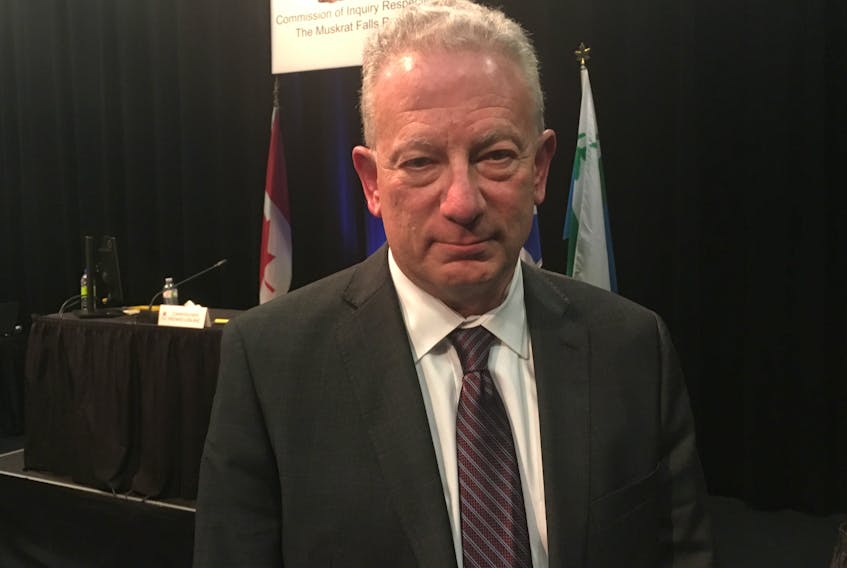Costs on the roughly 1,100-kilometre Labrador-Island Link increased during construction in part because of limited geotechnical information. Nalcor Energy and its contractor discovered practical challenges along the way.
In presenting his report to the Muskrat Falls Inquiry this week, auditor Scott Shaffer of Grant Thornton spoke briefly about Nalcor Energy pressing ahead with limited information on conditions. Whether proceeding as they did, or going the route of gathering more data, he found the issue was additional cost to the project.
Construction of the land-based portion of the Labrador-Island Link — building the transmission towers and stringing the DC line — was the second-largest package of work on the Muskrat Falls project. It accounted for $649 million of cost overrun as of March 2018 (the overrun is stated as $788 million, but was adjusted down to account for costs associated with scope changes and costs associated with new work transferred from other contract packages).
There were multiple issues arising, including an unexpected problem with conductor wire, but there were also geotechnical conditions different than expected.
“The (contract) package budget was developed with limited geotechnical data due to the environmental assessment restrictions,” Shaffer reported to the inquiry.

“Jason Kean, the former Nalcor deputy general project manager, explained, 'We didn't have any geotechnical data because we weren't allowed under the environmental assessment process. We could fly a little mini Kubota excavator on a helicopter to dig down one metre in a few locations. That was it because it would be deemed that we would start construction if we were to have entered into a lot of these remote locations. So that challenged that from an estimating perspective, we had to make assumptions based on mapping and geotechnical data.”
The anchors for power towers depend on the ground, sub-surface. As the towers were built along the transmission line, there were changes for Valard and Nalcor in the planned foundations.
The auditor had its own consultant, Williams Engineering, look at the issue of geotechnical conditions — one Nalcor Energy leadership had shared in past project updates, as a contributor to the increased Muskrat Falls project costs.
“Best practice is to attend each tower location and complete a minimum of one borehole per tower location. Depending on soil conditions, a site investigation might include an alternate investigation method such as a test pit (digging a hole), confirmation of bedrock conditions, or other appropriate testing techniques,” the auditor’s report said, noting Williams found that some points along the Labrador-Island Link had no geotechnical information gathered at all.
Outside of the inquiry hearing room, former Nalcor Energy CEO Ed Martin said reaching some of the remote areas for the line would have required building access roads. And that could not have been done without a separate round of environmental assessment and permitting. In addition, he said it was not reasonable to cover the entire area of the line given its sheer size without far greater spending before the project was sanctioned.
“That decision, in retrospect, cost us some money. But it was a considered decision. We made it eyes wide open,” he said.
The agreements with Valard allowed for additional payment to the company as the geotechnical conditions were confirmed, and different anchors required. Nalcor Energy decided to contract, knowing the risk existed for conditions to be less favourable than expected.
“If you had asked the contractor to take that exposure up front, without the geotechnical drilling, they would have put the prices up extremely high in their bid,” Martin said, offering the alternative. “So it’s a trade-off.”
RELATED









